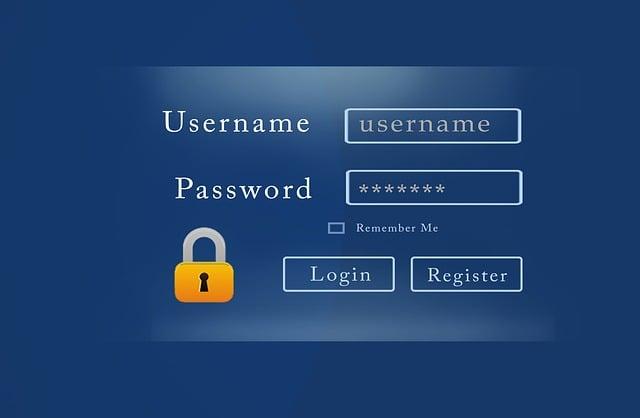Table of Contents
- Understanding the Basics of Email Domain Flipping
- Identifying Profitable Domains for Resale
- Crafting an Effective Marketing Strategy for Your Domain
- Best Practices for Securing and Transferring Domains
- Navigating Legal Considerations and Avoiding Common Pitfalls
- Q&A
- Closing Remarks


Understanding the Basics of Email Domain Flipping
Email domain flipping is an intriguing venture that revolves around purchasing unused or underperforming domain names with the intent of reselling them for a profit. This practice has gained momentum in the digital landscape, where a strategic approach can lead to lucrative opportunities. The fundamental principle is relatively simple: recognize the value of a domain name based on its uniqueness, keyword relevance, and market demand. Successful flippers often conduct thorough research, evaluating the potential resale value based on current market trends and sales histories.
Understanding what makes a domain name valuable is crucial. Consider the following characteristics:
- Keyword Richness: Domains that contain popular keywords can drive organic traffic and thus have a higher market value.
- Brandability: Names that are catchy, memorable, and easily brandable attract more buyers.
- Extension Relevance: While .com is the gold standard, other extensions like .net or .co can also hold value based on niche markets.
When engaging in email domain flipping, it’s also important to take into account the legal aspects of domain ownership and transferability. Buyers need to ensure that the domains they purchase do not infringe on existing trademarks. Additionally, a well-structured flipping strategy includes:
| Step | Description |
|---|---|
| Research | Identify undervalued domains using tools like Google Trends and domain auction sites. |
| Purchase | Acquire domains that meet your criteria, ensuring to check their registration history. |
| Market | List your domains on various platforms with attractive descriptions and pricing strategies. |
| Transfer | Facilitate smooth ownership transfers through trusted registrar processes. |
Identifying Profitable Domains for Resale
Identifying the right email domains for resale involves a clear understanding of market trends and buyer preferences. When exploring potential domains, consider factors such as keyword relevance, brandability, and extension choice. Domains that incorporate popular keywords typically attract more attention from businesses looking to enhance their online visibility. Additionally, domains that are easy to spell and pronounce often fare better in terms of memorability, leading to increased demand. Utilizing analytical tools can also significantly aid your domain research. Google Trends and keyword planners can provide insights into what phrases are currently popular or gaining traction. Look for domains that align with evergreen topics or emerging industries, as these have the potential for sustained interest. Furthermore, pay attention to industry-specific niches; domains that cater to specialized markets may offer lucrative resale opportunities due to their targeted appeal. Here’s a simple table to consider when evaluating potential domains for resale:| Attribute | Importance Level |
|---|---|
| Keyword Relevance | High |
| Length of Domain | Medium |
| Brandability | High |
| Extension Type (e.g., .com, .net) | High |
| Market Trends | Medium |


Crafting an Effective Marketing Strategy for Your Domain
When it comes to enhancing the value of your email domains, a well-crafted marketing strategy is essential. Understanding your target audience is the first crucial step. Identify who would benefit most from the domains you have in your possession. You might focus on businesses looking for branding opportunities or individuals seeking a unique personal identity. It’s important to capitalize on the niche your domains serve, making tailored marketing messages that resonate with potential buyers.
Next, leverage multiple channels to showcase your domains effectively. Consider these compelling strategies:
- Social Media Campaigns: Utilize platforms like LinkedIn, Twitter, and Facebook to share eye-catching posts showcasing your domains.
- Content Marketing: Create informative blog posts or videos highlighting the benefits of unique email domains, enhancing their perceived value.
- Email Marketing: Develop targeted email campaigns reaching out to businesses and individuals who may be interested in owning a branded domain.
Lastly, don’t underestimate the power of analytics. Keep track of your marketing efforts through reliable metrics. Implement tracking for email opens, click rates, and social media engagement. Analyzing this data will help you refine your strategy over time. Additionally, consider utilizing A/B testing for email campaigns, which allows you to gauge what type of content resonates best with your audience. Incorporating these insights will ultimately enhance your overall marketing effectiveness and drive successful domain flipping.


Best Practices for Securing and Transferring Domains
Transferring ownership of a domain can appear overwhelming, but by following a systematic approach, you can ensure that everything goes smoothly. First, always verify ownership of the domain before initiating a transfer. This typically involves checking the registration details with the current domain registrar. To facilitate a successful transfer, make sure the domain is unlocked, and the authorization code (also known as EPP code) is secured. Providing this essential information promptly can significantly speed up the process.
While transferring domains, it is critical to maintain strong security measures to protect against unauthorized access. Implementing two-factor authentication (2FA) on your domain registration account can provide an extra layer of protection. Additionally, regularly updating passwords and using complex passphrases can help safeguard your domains from potential breaches. Here are some key practices to follow:
- Use a reliable registrar with robust security features.
- Enable domain privacy protection to shield your personal information.
- Be cautious of phishing attempts aimed at acquiring your authentication details.
After the transfer is complete, it’s crucial to confirm that all settings have been properly transferred. This includes checking DNS settings, ensuring email forwarding is correctly configured, and verifying SSL certificates if applicable. To make the transition seamless, consider utilizing a table to summarize the necessary post-transfer checks:
| Post-Transfer Actions | Status |
|---|---|
| DNS Settings Configuration | ✔️ |
| Email Forwarding Confirmation | ✔️ |
| SSL Certificate Validation | ✔️ |


Navigating Legal Considerations and Avoiding Common Pitfalls
When entering the world of email domain flipping, it’s essential to understand the legal landscape to protect your investments and operations. Each domain name can potentially be intertwined with existing trademarks or copyrights, leading to disputes if not carefully navigated. Conducting thorough research is vital. Utilize tools like WHOIS databases to check the history of domain names, ensuring they don’t infringe on someone else’s intellectual property. This precaution can save you significant headaches down the line.
While acquiring email domains can be lucrative, pay close attention to terms of service and legal agreements from domain registrars. Failing to adhere to these rules can result in your account being suspended or in legal action. Consider the following key points:
- Familiarize yourself with ICANN rules: Understand the policies governing domain registrations to prevent unintentional violations.
- Monitor expiration dates: Keep track of when domains are due for renewal to avoid losing valuable properties.
- Document every transaction: Maintain clear records for all acquisitions and sales to protect yourself in disputes.
Potential pitfalls can also arise from the method of flipping. Relying solely on automated bidding systems may leave you vulnerable to scams. Build relationships with reputable buyers and sellers within the community. This personalized approach often leads to better deals and reduces the risk of fraud. It’s beneficial to utilize feedback ratings on marketplace platforms to gauge the reliability of trading partners. Here’s a simple overview of what to assess when considering a domain purchase:
| Criteria | Importance |
|---|---|
| Domain Age | Older domains may carry more value |
| Keyword Relevance | Higher relevance may lead to better search rankings |
| Historical Traffic | Domains with established traffic can be more attractive |
Q&A
Email Domain Flipping: Your Questions Answered
Q1: What is email domain flipping?
A1: Email domain flipping is the practice of buying email domains with the intent to resell them at a higher price. Just like real estate or traditional domain names, email domains can have significant value, particularly if they possess keywords, brand potential, or rarity that appeals to certain buyers.Q2: How do I determine the value of an email domain?
A2: The value of an email domain can be assessed based on several factors, including the length of the domain, its memorability, keyword relevance, and market demand. Tools like domain appraisal websites, keyword research tools, and competitive analysis can help you estimate its worth.Q3: Where can I buy email domains?
A3: Email domains can be purchased through various registrars, such as GoDaddy, Namecheap, or Google Domains. Additionally, marketplaces like Flippa and Sedo offer platforms for buying and selling domains, including email-specific examples. Q4: What are some strategies for successfully flipping email domains?
A4: Successful flipping involves a few key strategies:- Research Trends: Stay updated on industry trends and consumer behavior to identify valuable potential domains.
- Brand Potential: Look for domains that could complement existing brands or fit into growing industries.
- Marketing Your Domains: Use social media, dedicated websites, and online forums to promote your domain and reach prospective buyers effectively.
Q5: Are there risks involved in email domain flipping?
A5: Like any investment, flipping email domains carries risks. These include market fluctuations, the possibility of unsold domains costing you renewal fees, or running afoul of trademark issues if you purchase domains that infringe on established brands. It’s important to conduct thorough research and exercise caution.Q6: How do I sell an email domain once I own it?
A6: Selling an email domain can be done through email outreach to potential buyers, listing your domain on marketplaces, or even hosting an auction. Having a professional landing page or sales pitch highlighting the domain’s value can also enhance buyer interest.Q7: Can I make a full-time income from email domain flipping?
A7: While it’s possible to generate significant income through email domain flipping, success usually requires extensive knowledge, experience, and a keen eye for market trends. Many flippers start part-time and expand into larger portfolios as they learn the business.Q8: What’s the best way to learn more about email domain flipping?
A8: Diving into dedicated forums, blogs, and webinars on trading domains can provide valuable insights. Engaging with the online community of domain flippers will also help you exchange tips, experiences, and strategies that can lead to better decision-making in your flipping endeavors.Feel free to delve deeper into any of these questions to better understand the world of email domain flipping. Each domain has its unique story, and with the right approach, you might just find your golden opportunity!

